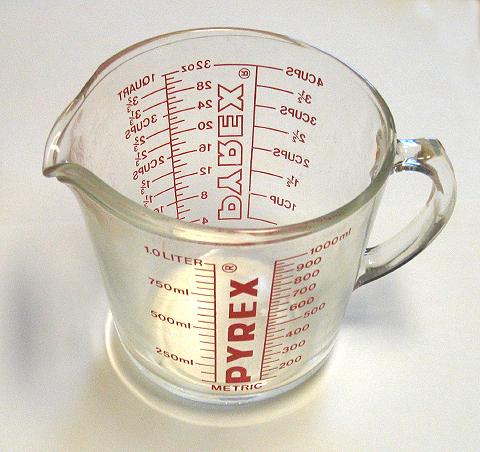I Found the Answer! (Now What Do I Do with It?)
by Donna Curry
I was using a recipe that I had gotten from my cousin in Germany. The recipe called for 200 mL of milk. I wanted to know what that was in cups so I Googled the information. Here’s what I found:
To calculate 200 Milliliters to the corresponding value in cups, multiply the quantity in milliliters by 0.0042267528198649 (conversion factor). In this case we should multiply 200 milliliters by 0.0042267528198649 to get the equivalent result in cups: 200 milliliters x 0.0042267528198649 = 0.84535056397299 cups.
Now, I’m not afraid of decimals (not even ones that are as exceedingly long as the ones above). But, even though I’d found out what the answer was, I realized that I didn’t have a measuring cup that measured in decimals, never mind to the hundred-quadrillionth place! So, the answer itself was useless.

But, I did have enough number sense to know that 0.845… was pretty close to 8/10, or its reduced form 4/5. And, although my measuring cup also doesn’t measure in tenths or fifths, I know that 4/5 is close to 1. So, I knew I needed a little less than a cup of milk for the recipe. I could have also used a slightly different approach to get the same answer. If I had started my calculations by shortening the conversion factor several places to 0.004, I would have come up with 0.8 which would make more sense to me than the answer provided by the online calculator.
This volume conversion experience made me think. Using number sense, I was able to think of these unwieldy numbers in more manageable terms. I was able to connect them to benchmarks that were easier to conceptualize. But what about the many adults who have not been taught to use flexible thinking in math to associate something new with something already understood? The conversion factor procedure may have provided an answer, but how well can the average person understand the concept of a number like 0.84535056397299? What does it mean in everyday terms? How does it relate to the actual problem we’re trying to solve? In short, do we know what to do once we have an answer?
It reminded me of how often we think of math as simply a bunch of procedures to be followed: Don’t worry about making any sense – or being useful in real life – just follow the procedure. When there’s an absence of conceptual understanding, we are prone to:
- choosing the wrong calculation method because we don’t understand what is being asked or how the amounts relate to one another;
- not being able to recognize whether our answers actually make sense
- not being able to “see” our answers in alternative, relatable situations or representations that make sense to us
Is this what we want for our students – to just follow procedures (often being told to memorize them, not even having the luxury of Googling a particular procedure) without any understanding, any estimation, any reasoning about whether the answer makes sense or not?
P.S. After doing some estimating based on the information I found on the internet, I pulled out my measuring cup only to discover that one side had gradations in cups . . . and the other side had gradations in mL. I guess I should pay closer attention to the math tools that I use. At least I was able to check my work another way!
Donna Curry is an educator, curriculum developer and professional development specialist with over 30 years of experience in adult education. For the past 30+ years, she has focused on math standards development at the national level (Equipped for the Future National Standards and Standards-in-Action projects) and at the state level (including states such as Rhode Island, Washington, Oregon, New Jersey, Oklahoma, and Ohio). She has also worked on the National Science Foundation’s EMPower project and served as co-director for the NSF-funded Teachers Investigating Adult Numeracy (TIAN) project. She co-developed and implemented the Adult Numeracy Initiative (ANI) project and Adults Reaching Algebra Readiness (AR)2. Donna currently directs the SABES Mathematics and Adult Numeracy Curriculum & Instruction PD Center for Massachusetts and the Adult Numeracy Center at TERC.
